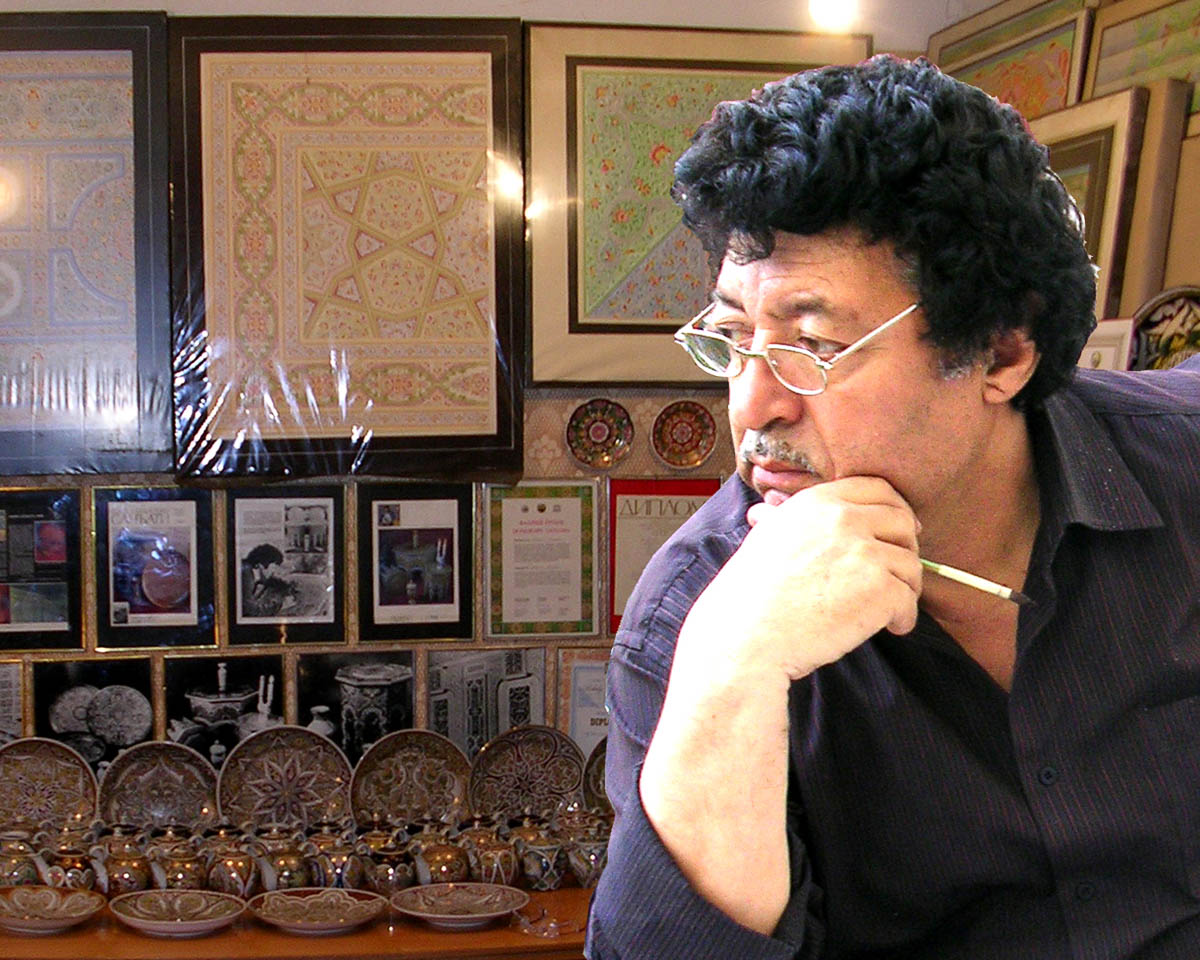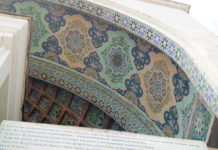Uzbek craftsmen decorate a variety of objects with ornamental painting on wood, from the architectural details and furniture to a variety of small wooden items, musical instruments, saddles and various household utensils.

The main centers of ornamental painting on wood in Uzbekistan of late nineteenth century to early twentieth century were Khiva, Kokand, Bukhara, Samarkand, Margilan, Fergana, Tashkent, Andijan and Namangan. The ornamental and graphic system was set during this period and is still used by modern craftsmen. Despite the limited numbers of floral and geometric elements, there is a great variety of motifs. This is achieved by special combination of elements, overlapping of one ornament to another, changing background colour and original interpretation of details. Ornamental painting of Uzbekistan differs in the harmony of colour combinations and rhythm of repetitive combinations. Distinctive feature of ornamental painting of Uzbekistan is absence of transition from one tone to another: craftsmen mainly use strongly contrasting colour combinations.
In ornamental painting on wood, craftsmen used mostly local dyes. Out of dyes imported into Central Asia at the turn of the twentieth century, ladzhuvard dye of blue colour was widely used. Till the end of the nineteenth century local dyes were varnished with eggs and glue. Starting with late nineteenth century, craftsmen began using dry and oil-based factory made paint. In the twentieth century craftsmen use dry factory dyes, oil and enamel paints and varnishes. The colours and shades that make up the Uzbek craftsmens’ palette and blue, green, yellow, red, white, orange, pink, dark pink and black. Unlike architectural paintings, painting of small items have very fine ornaments. Craftsmen cover items surface so densely that the background becomes almost invisible.
Throughout the period of time between 1920s and 1980s, most craftsmen still use traditional ornamental compositions, but due to lack of demand, many products with ornamental painting stopped being manufactured. Currently, craftsmen that specialise on painting on wood manufacture a variety of items. These are mostly souvenirs, such as decorative tables, small jewelry boxes and wall panels. Many of these craftsmen are also involved in interior designing of modern public buildings, including cafes, restaurants, and religious buildings and structures such as mosques and madrasas.





